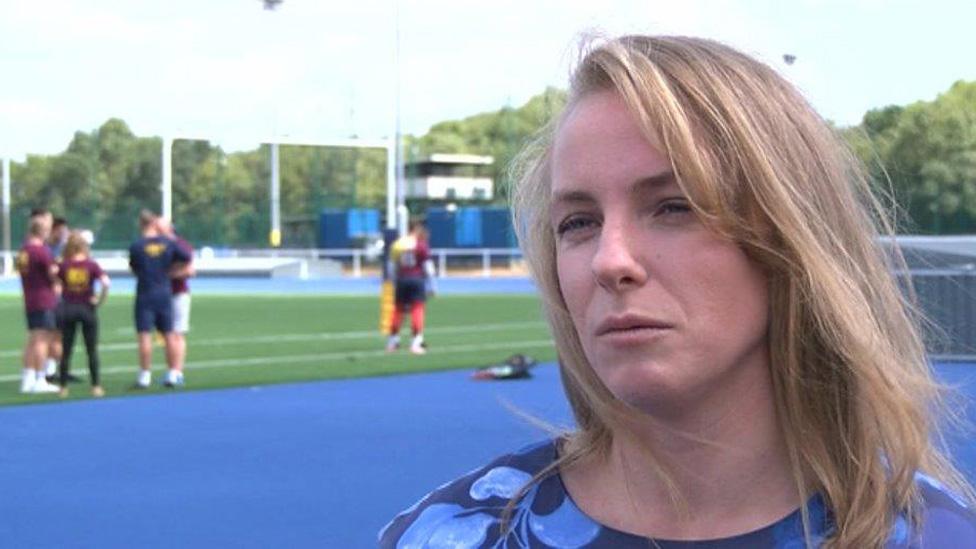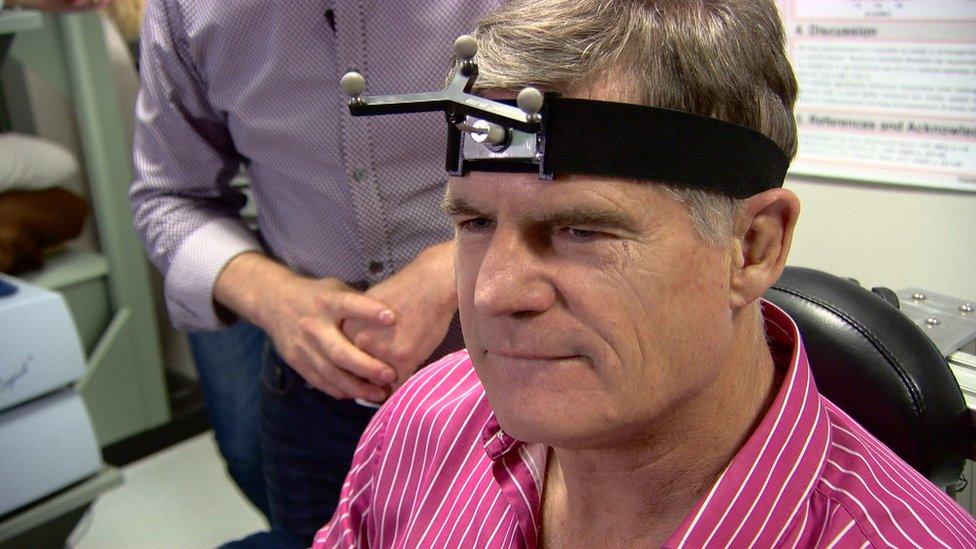'Bold change' urged on rugby injury risks
- Published

Rugby needs a "bold change" to reduce the level of injury risk to players, according to an injury expert who works closely with the Welsh Rugby Union.
Dr Izzy Moore, who studies injury rates in both international and regional games, warned player welfare has to be "at the centre of the sport".
The Welsh Rugby Union has been asked to comment.
Sport governing body World Rugby said it was "committed to enhancing injury-prevention at all levels".
Dr Moore, who works at Cardiff Metropolitan University, said small changes in the game's laws "don't seem to be having large impacts".
"At the moment you might end up in a situation where you have fewer players coming through the system because of the fears of the injury risk."
She admitted change would be difficult for some people to accept but suggested taking the collision sport "back to the skilful elements again would appeal to a different crowd".
However, former Wales international Adrian Hadley said "rugby would not be rugby" if it was not for the big hits.
"It would be like going into a boxing ring and saying you can't punch in the head - rugby is a physical game and a physical challenge," he told BBC Radio Wales' Good Morning Wales.

'Playing rugby wasn't an option'
Adam Hughes describes the experience of concussion during his shortened career
Former Dragons player Adam Hughes was forced to retire following a brain injury at the age of 28.
He said concussion incidents could take longer to recover from as his career progressed.
"You're just in a daze, you're not really sure why you're there, what you're doing," he said.
"There were some instances in games when I'm in the wrong positions, running the wrong sort of moves - which obviously frustrates the guy next to you but there's not a lot you can do about it."
Hughes, a centre and wing, who also played for Exeter Chiefs, said: "A neurologist said that playing rugby wasn't an option due to two major trauma scars that I had sustained on my brain.
"The decision was made there and then."
The centre, who had learnt to fly and hoped to become a commercial airline pilot after his playing days, said he was now looking at other career options because his concussions have ruled that out.
"I was prepared as I could be but it was still very hard," he said of his retirement.

The shock retirement of British and Irish Lions and Wales flanker Sam Warburton at the age of 29 last month prompted calls for law changes from around the world.
Shortly afterwards the Rugby Football Union announced the height of a legal tackle would be lowered in a trial designed to make the game safer.
The pilot, in the second tier Championship Cup competition, is the first of its kind in the UK.
James Hook, a former Wales team mate of Warburton, said he had played in "probably the most physical position" and his retirement was down to "an accumulation of injuries".
He said government body World Rugby was constantly reviewing injury prevention and trying to make it safer.
Speaking to Good Morning Wales, he said: "It's a physical game and a lot of players play the game because its physical and they enjoy the physicality.
"You're always going to get injuries no matter how you look at it."
Dr Moore said lowering the height was "logical" but she had doubts about whether it would be enough "to see a shift and reduction" in injury rates.
She added that the sport was being proactive and "trying to push things forward, perhaps better that other sports are".

Dr Izzy Moore said the game in Wales was taking the issue seriously
Dr Moore said: "We have worked closely with WRU. They have always been open and honest and they've been very keen to put the injury rates that we've analysed out there so that people know the risk.
"The sport is great in that respect but we haven't seen a change in injury rates for several years, concussion has gone up but the overall injury rates have stayed exactly the same."
World Rugby said law trials were "not small tweaks" but as a result of ground-breaking analysis of injuries.
Trials lowering the tackle height in the under-20s game had shown a 50% drop in concussion and "dramatically fewer" head injury assessments.
World Rugby added that injury rates and severity were not increasing in the elite game, and that "approximately 40% of injuries stem from training and are therefore controllable".
- Attribution
- Published25 January 2018

- Attribution
- Published28 December 2017

- Published18 March 2017

- Published21 September 2015
